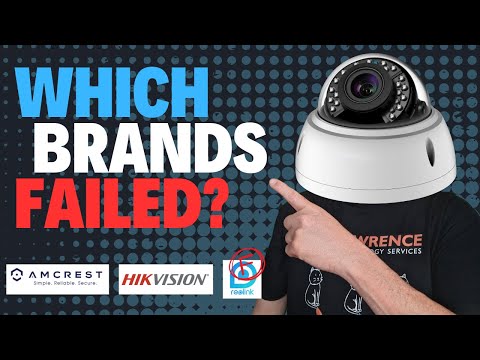I’m looking at moving to an IP Camera Surveillance system for my house that stores videos on my TrueNAS SCALE NAS running ZFS.
I have 9 cameras right now and would love to add more, but I’ve been waiting.
- Is ZFS good for this purpose?
- Anything I need to keep in mind?
- Are there any good pieces of software I can use?
- Are there any doorbell IP cameras?
- Is there a good place to see the storage amount to how much video data I wanna store?
Background
Nest
I currently have a Nest camera system and don’t like the idea of these folks spying on me. Honestly, I wanna get out of the Nest ecosystem completely (I bought all their stuff year ago). Cameras are my first step to Nest independence.
UniFi Protect
I’ve been wanting to switch to UniFi Protect for some time now because they have the doorbell and had affordable cameras.
Problem is their system is 100% proprietary which is a huge waste of money. They also take way too long to release products and have jacked up their prices. It’s put a bad taste in my mouth, so I don’t wanna focus on UniFi if I can avoid it.
I have all-UniFi networking gear, but I think using UniFi here is a bad long-term deal considering I’m already trying to get away from Nest.
Synology Surveillance Station
The only thing that attracted me to Synology’s solution is they allow for off-the-shelf IP cameras.
Although, I decided again using it because I’d have to buy another rackmount NAS, and I already paid a bunch of money for two self-built Stoinator XL60 chassis (one is a JBOD). I already have ZFS, so I’d love to just buy some drives, setup a new zpool, and throw some videos in there.
IP Camera software
I was looking at Frigate. Looks like it has all the features I want and allows me to know if a human is at a certain location. It has a phone app too as well as a TrueCharts container.
Options (and issues)
I’m pretty sure I need hardware video acceleration for an app like Frigate.
My NAS is an Epyc 7252p, and I’m pretty sure it has no hardware video acceleration. I could add a GPU, but 5 of the 7 PCIe slots are populated and a 6th slot is has nothing in it, but the slot itself is in use. It’s this server is packed.
Raspberry Pi
I heard the Raspberry Pi has hardware video acceleration. Is this true? Or would I have to hook up a GPU to one? If I hooked up a GPU to a Raspberry Pi and put it in a server, would it be capable of managing 9 cameras?
Building another server
I have another Epyc 7252p which I was unable to return.
I could build another rig with only a boot drive, put a GPU in there, and have it store all these files on the NAS.
This could be a lot of Ethernet traffic though. Would it be fine? I have 2x10Gb LAGG on my NAS.
Using the existing JBOD.
Since I already have External miniSAS going into the JBOD, I could put the surveillance hard drives on one of the SAS expanders and avoid having to buy another NAS-chassis.
This would also completely eliminate the double network traffic (Camera → video server → NAS) and all traffic now goes over miniSAS.
One issue is if I restart the JBOD. Now I’d have to also turn off the NAS and video surveillance system. That part sucks :(.
Concerns
- I wanna make sure, whatever system I use, I can keep the cameras’ firmware up-to-date.
- I don’t want this app to ever stop working. I don’t like the idea of it being tied to my NAS’s existence because a simple restart can kill all my video feeds.
- I wanna make sure I can use a phone app or browser because I have 3 kids and use the cameras to see what happened when they’re being rough.
- I will 100% avoid any Chinese products. If the company is Chinese they’re 100% gonna be spying on me and can’t be sued. It’s not even an “if” situation.


